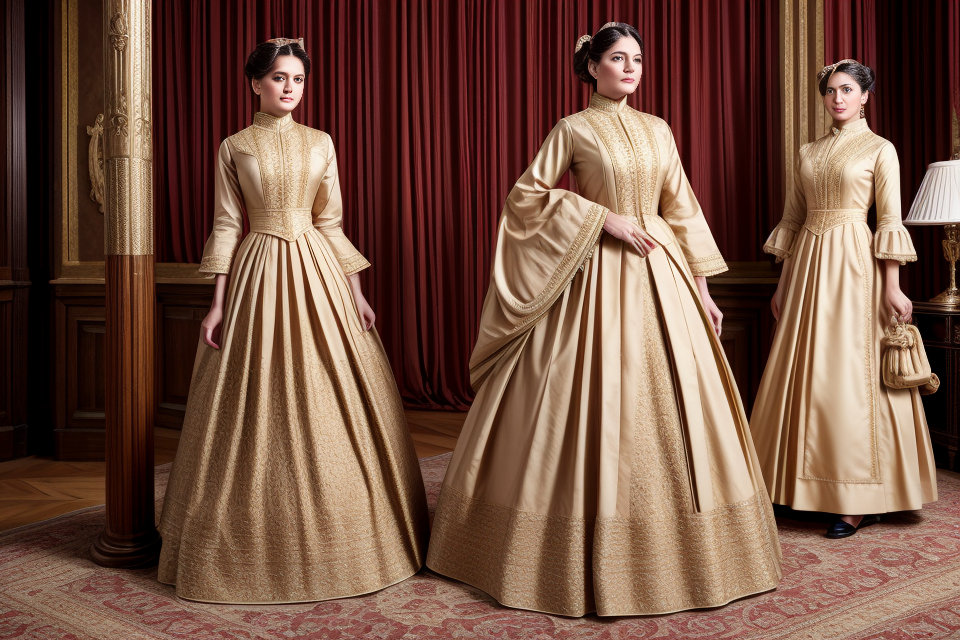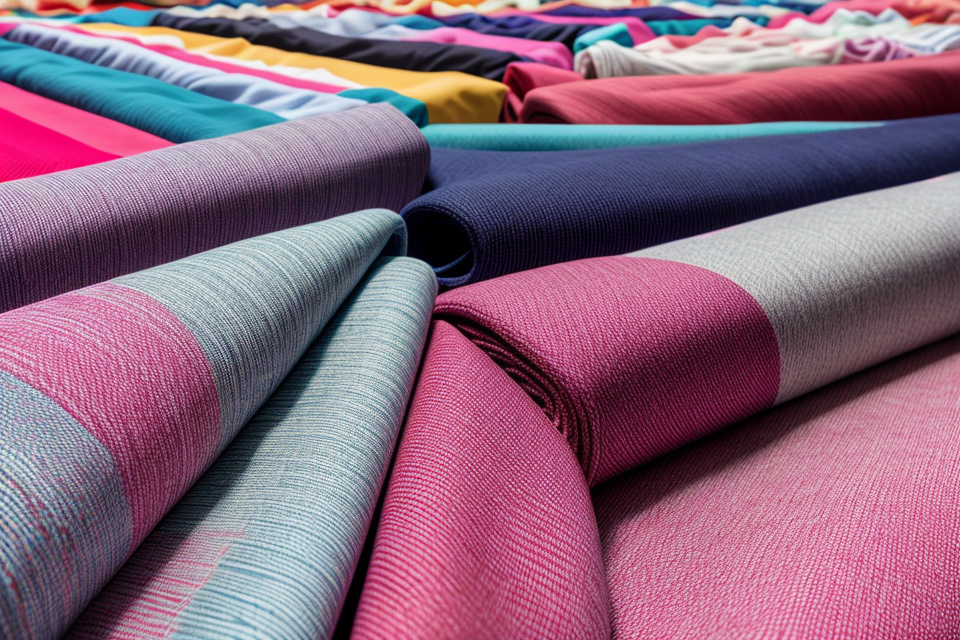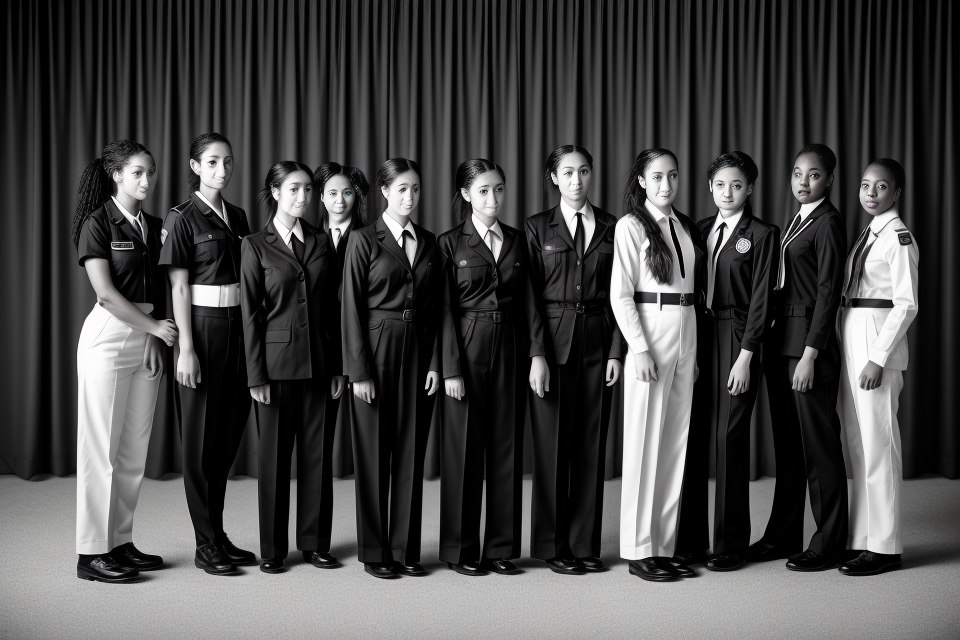
Uniforms have been a part of human history for centuries, serving as a symbol of identity, rank, and profession. But when was the first uniform introduced? The concept of wearing a uniform dates back to ancient times, with evidence of uniforms being used in the military of ancient civilizations such as Egypt, Greece, and Rome. However, the modern concept of uniforms as we know it today began to take shape during the industrial revolution in the 18th and 19th centuries. As industries and organizations began to standardize their dress codes, uniforms became a way to distinguish between different professions and social classes. This brief history of uniform materials will explore the evolution of uniforms from their ancient origins to the modern-day materials used in creating uniforms.
The Origins of Uniforms
Military Uniforms
Early examples of military uniforms date back to ancient civilizations such as the Romans, Greeks, and Chinese. These uniforms were primarily used to distinguish soldiers from civilians and to create a sense of unity and identity within the military.
The purpose of military uniforms was to standardize the appearance of soldiers and to make it easier for commanders to identify their troops. This was particularly important in the early days of warfare when armies were much smaller and individual soldiers were more easily recognizable.
Over time, the design and materials used in military uniforms evolved to reflect the changing nature of warfare. For example, during the medieval period, knights wore armor made of metal plates and chain mail, while foot soldiers wore leather jerkins and hose.
As firearms became more common, uniforms began to incorporate more protective elements such as metal buttons, epaulettes, and collars. The introduction of the musket in the 16th century marked a significant shift in the way wars were fought, and military uniforms evolved to reflect this change.
During the Industrial Revolution, mass-produced uniforms became more common, and military forces began to standardize their dress according to rank and role. This was particularly evident in the French and British armies, which adopted highly formalized uniforms that included intricate rank insignia and ornate headgear.
Today, military uniforms continue to evolve to meet the changing needs of modern warfare. They are designed to be functional, comfortable, and easily identifiable, and may incorporate advanced materials such as moisture-wicking fabrics and camouflage patterns. Despite the advances in technology, however, the fundamental purpose of military uniforms remains the same: to create a sense of unity and identity within the military and to distinguish soldiers from civilians.
Work Uniforms
Early examples of work uniforms
The use of uniforms in the workplace can be traced back to ancient civilizations, where workers were often identified by their clothing. In ancient Rome, for example, workers wore tunics with distinctive markings to indicate their occupation. Similarly, in medieval Europe, guilds would often have distinctive dress codes for their members.
Purpose of work uniforms
The primary purpose of work uniforms has remained relatively consistent throughout history: to identify and distinguish workers from the general public. This is particularly important in industries where safety is a concern, such as construction or manufacturing. Uniforms also serve as a means of establishing a sense of professionalism and identity within an organization.
Evolution of work uniforms
Over time, work uniforms have evolved to meet the changing needs of different industries. For example, in the early 20th century, industrial workers often wore heavy, protective clothing to shield them from machinery and hazardous materials. Today, many workplaces have adopted more casual dress codes, although some industries still require employees to wear specific uniforms. Additionally, advances in technology have led to the development of new materials and designs for work uniforms, such as moisture-wicking fabrics and reflective safety vests.
The Materials Used in Uniforms
Fabrics
When it comes to uniforms, the type of fabric used plays a crucial role in determining the functionality, durability, and overall effectiveness of the garment. Over the years, various types of fabrics have been utilized in the production of uniforms, each with its own unique set of advantages and disadvantages. In this section, we will explore the different types of fabrics used in uniforms and the evolution of fabric technology.
Types of Fabrics Used in Uniforms
- Cotton: Cotton has been a popular choice for uniforms for many years due to its softness, breathability, and affordability. It is commonly used in casual and everyday uniforms, such as those worn by employees in retail and food service industries.
- Polyester: Polyester is a synthetic fabric that is known for its durability, resistance to wrinkles, and ease of care. It is often used in uniforms that require a more formal appearance, such as those worn by police officers and security guards.
- Nylon: Nylon is another synthetic fabric that is popular for its strength and lightweight nature. It is commonly used in uniforms that require a high level of mobility, such as those worn by athletes and military personnel.
- Wool: Wool is a natural fabric that is known for its insulating properties and ability to wick moisture away from the body. It is often used in uniforms for outdoor activities, such as those worn by hikers and hunters.
Advantages and Disadvantages of Different Fabrics
Each type of fabric has its own unique set of advantages and disadvantages, which can impact the overall effectiveness of the uniform. For example, cotton is soft and breathable, but it is also prone to wrinkling and may not be as durable as other fabrics. Polyester, on the other hand, is resistant to wrinkles and easy to care for, but it can be less comfortable to wear and may not breathe as well as cotton.
Wool, while highly effective at wicking moisture away from the body, can be heavy and less comfortable in hot weather. Nylon, while lightweight and strong, may not be as breathable as other fabrics.
Evolution of Fabric Technology
Over the years, fabric technology has evolved significantly, leading to the development of new materials and manufacturing techniques. For example, new fabrics have been developed that are designed to be more breathable, moisture-wicking, and durable than traditional materials. Additionally, advances in digital printing and embroidery have made it easier and more cost-effective to add logos and other design elements to uniforms.
As technology continues to advance, it is likely that we will see even more innovative fabrics and manufacturing techniques being used in the production of uniforms. This can lead to improved functionality, increased durability, and enhanced comfort for those who wear them.
Buttons and Badges
Early examples of buttons and badges
The use of buttons and badges as a means of identification can be traced back to ancient civilizations such as the Romans and Greeks, who used metal and enamel buttons to distinguish military ranks and social status. In medieval Europe, uniforms were adorned with intricate embroidery and badges featuring coats of arms, symbolizing allegiance to a particular lord or kingdom.
Purpose of buttons and badges
The primary purpose of buttons and badges in uniforms has remained relatively consistent throughout history: to identify the wearer’s rank, position, or affiliation. This visual cue has been essential for military organizations, as it allows for easy recognition of command structures and unit affiliations during combat. In addition to their functional purpose, buttons and badges have also served as a symbol of pride and tradition, with many military units displaying unique designs that reflect their history and heritage.
Evolution of buttons and badges
Over time, the design and materials used for buttons and badges have evolved to meet the changing needs of uniforms and their wearers. Early buttons were often made of wood, bone, or horn, while later examples were crafted from materials such as metal, plastic, and even glass. Badges have also undergone significant changes, with modern designs incorporating advanced manufacturing techniques like laser cutting and digital printing to create intricate and detailed designs. Today, buttons and badges continue to play a vital role in military uniforms, serving as a symbol of service and dedication to duty.
The Impact of Uniforms on Society
Social and Cultural Significance
Uniforms have played a significant role in shaping social and cultural norms throughout history. They have been used as symbols of power and authority, identity and belonging, and social and cultural change.
Uniforms as symbols of power and authority
Throughout history, uniforms have been used to display power and authority. In ancient times, military leaders wore distinctive clothing to show their rank and command. Similarly, in modern times, police officers, firefighters, and other public servants wear uniforms to identify their positions of authority. The use of uniforms in these contexts serves to reinforce the idea of a hierarchical society, where certain individuals hold more power and authority than others.
Uniforms as symbols of identity and belonging
Uniforms have also been used as symbols of identity and belonging. In many organizations, such as schools, sports teams, and military units, uniforms are used to create a sense of unity and belonging among members. Wearing a uniform can create a sense of identity and pride among individuals, as they feel part of a larger group with a shared purpose. This sense of belonging can be particularly important for individuals who may feel marginalized or excluded in other areas of their lives.
Uniforms as symbols of social and cultural change
Uniforms have also been used as symbols of social and cultural change. For example, during the civil rights movement in the United States, activists wore uniforms to demonstrate their solidarity and to show that they were part of a larger movement for change. Similarly, in many countries, school uniforms have been used to promote social and cultural change by creating a more inclusive and diverse educational environment. By promoting a sense of unity and shared identity, uniforms can help to break down social barriers and promote greater understanding and tolerance among individuals from different backgrounds.
Uniforms in Popular Culture
Uniforms have been a popular topic in literature and film, with many works featuring characters wearing uniforms as a key aspect of their identity. From school uniforms to military fatigues, uniforms have become a symbol of authority and discipline in popular culture. However, these depictions often reinforce stereotypes and perpetuate certain cultural assumptions about uniforms.
In literature, uniforms have been used to symbolize the strict rules and hierarchies of institutions such as schools and prisons. For example, in Jane Austen’s “Emma,” the protagonist Emma Woodhouse is a wealthy young woman who becomes embroiled in matchmaking schemes and social intrigue. One of the central conflicts of the novel involves the arrival of a new character, George Knightley, who challenges Emma’s assumptions about her own social status and the rules of society.
In film, uniforms are often used to depict characters as being part of a larger organization or group. For example, in “Star Trek,” the crew of the USS Enterprise wears a standardized uniform that signifies their membership in the United Federation of Planets. The uniforms serve as a visual shorthand for the characters’ roles and responsibilities, as well as their commitment to the larger mission of exploration and discovery.
However, these depictions of uniforms can also reinforce negative stereotypes and perpetuate harmful assumptions. For example, the depiction of military uniforms in popular culture often portrays soldiers as being mindless followers who are willing to engage in violence without question. This stereotype can be damaging, as it ignores the complex motivations and experiences of individuals who serve in the military.
Additionally, cultural attitudes towards uniforms can vary widely depending on the context. In some societies, uniforms are seen as a symbol of authority and respect, while in others they may be viewed as a sign of oppression or conformity. For example, in some countries, school uniforms are mandatory and seen as a way to promote discipline and uniformity among students. However, in other countries, school uniforms may be optional and seen as a symbol of privilege or elitism.
Overall, uniforms have played a significant role in popular culture, with many works of literature and film featuring characters wearing uniforms as a key aspect of their identity. While these depictions can be entertaining and thought-provoking, they also perpetuate certain stereotypes and cultural assumptions that can be harmful or misleading.
The Future of Uniforms
Technological Advancements
Advancements in Fabric Technology
In recent years, there have been significant advancements in fabric technology that have had a profound impact on the design and function of uniforms. These advancements have allowed for the creation of materials that are lighter, stronger, and more durable than ever before. Additionally, new fabric technologies have enabled the development of materials that are designed to be more breathable, moisture-wicking, and temperature-regulating, which has greatly improved the comfort and performance of uniforms.
Advancements in Uniform Design and Function
Advancements in technology have also led to significant improvements in the design and function of uniforms. For example, many modern uniforms now incorporate ergonomic design principles, which means that they are designed to fit the body’s natural movements and provide greater freedom of movement. Additionally, new materials and manufacturing techniques have enabled the creation of uniforms that are more durable, easy to clean, and require less maintenance over time.
Impact of Technology on the Role of Uniforms in Society
The impact of technology on the role of uniforms in society cannot be overstated. As technology continues to advance, it is likely that we will see even more significant changes in the way that uniforms are designed, produced, and used. For example, the development of smart textiles and wearable technology is already beginning to transform the way that uniforms are designed and used in a variety of industries, from healthcare to law enforcement. As these technologies continue to evolve, it is likely that we will see even more sophisticated and intelligent uniforms that are capable of performing a wide range of functions.
Sustainability and Environmental Concerns
Environmental impact of uniform production and disposal
Use of natural resources in uniform production
Waste generated by uniform disposal
*Emissions from manufacturing processes
Sustainable alternatives to traditional uniform materials
Recycled materials
Biodegradable materials
*Sustainably sourced fabrics
Future trends in sustainable uniform design
Circular economy approach
Minimalism and functional design
*Digital design and 3D printing
As the world becomes more conscious of the environmental impact of human activities, the fashion industry, including the production of uniforms, is under increased scrutiny. Uniforms are an essential part of many industries, from healthcare to hospitality, and their production and disposal have a significant environmental impact. To address these concerns, sustainable alternatives to traditional uniform materials are being explored, and future trends in sustainable uniform design are emerging.
One approach to sustainable uniform design is the use of recycled materials. This includes using recycled polyester, nylon, and cotton in the production of uniforms. Recycling reduces the need for virgin materials and helps to conserve natural resources. Biodegradable materials are another option, and these include materials such as bamboo, hemp, and soy. These materials break down naturally and do not contribute to landfill waste.
Sustainably sourced fabrics are also becoming more popular in sustainable uniform design. This includes using organic cotton, which is grown without the use of harmful pesticides and synthetic fertilizers. Other sustainable fabrics include Tencel, which is made from wood pulp, and modal, which is made from beech trees.
In addition to using sustainable materials, future trends in sustainable uniform design include a circular economy approach. This involves designing uniforms that can be easily repaired, reused, and recycled. Minimalism and functional design are also important trends, as they reduce the need for excessive materials and minimize waste. Digital design and 3D printing are also being explored as ways to reduce waste and streamline the production process.
Overall, sustainability and environmental concerns are becoming increasingly important in the production of uniforms. As the fashion industry becomes more conscious of its impact on the environment, sustainable alternatives to traditional uniform materials are being explored, and future trends in sustainable uniform design are emerging. By adopting sustainable practices, the fashion industry can reduce its environmental impact and contribute to a more sustainable future.
The Evolution of Uniform Design
Uniform design has undergone significant changes over the years, reflecting the influence of fashion and design trends. The evolution of uniform design can be traced back to the early 20th century, when the military began to adopt more standardized uniforms.
One of the most significant changes in uniform design was the introduction of camouflage uniforms during World War II. These uniforms were designed to help soldiers blend in with their surroundings and were made from materials that were difficult to detect by enemy forces.
After World War II, uniform design continued to evolve, with a focus on functionality and comfort. Materials such as synthetic fibers and moisture-wicking fabrics were introduced, making uniforms more comfortable and easier to maintain.
In recent years, there has been a trend towards more casual and practical uniform designs, particularly in the workplace. This has led to the adoption of more relaxed styles, such as button-down shirts and khakis, as well as the use of more comfortable and breathable materials, such as cotton and bamboo.
As technology continues to advance, there are likely to be further developments in uniform design, with a focus on incorporating new materials and technologies to improve functionality and comfort. For example, some companies are exploring the use of smart textiles, which can monitor the wearer’s vital signs and provide real-time feedback.
Overall, the evolution of uniform design reflects the changing needs and preferences of society, as well as advances in technology and materials science. As we look to the future, it is likely that uniforms will continue to evolve, incorporating new materials and technologies to meet the needs of a diverse range of industries and settings.
FAQs
1. When was the first uniform introduced?
The history of uniforms dates back to ancient times, where they were used by armies, military personnel, and even some religious figures. However, the exact date of the first uniform introduction is unknown.
2. Who introduced the first uniform?
The first uniforms were introduced by military leaders and were worn by their soldiers. It is believed that the first recorded use of uniforms was by the ancient Romans, who wore a distinctive set of armor and helmets to identify themselves as part of the Roman army.
3. What materials were used to make the first uniforms?
The materials used to make the first uniforms varied depending on the time period and location. Ancient Romans, for example, wore armor made of metal, while medieval knights wore chainmail. In more recent times, uniforms have been made from a variety of materials, including wool, cotton, and synthetic fabrics.
4. Why were uniforms introduced?
Uniforms were introduced to help identify individuals as part of a particular group or organization. In the case of the military, uniforms were designed to make it easier to distinguish between friend and foe on the battlefield. Uniforms also helped to create a sense of unity and belonging among members of an organization.
5. How have uniforms evolved over time?
Uniforms have evolved significantly over time, reflecting changes in fashion, technology, and society. Early uniforms were often simple and functional, while modern uniforms are designed to be both practical and stylish. In addition, advances in technology have allowed for the development of more advanced materials and design techniques, making uniforms more comfortable and durable than ever before.


